Air Operations, Europe The P-51 Mustang fighter, which is to play such a decisive role in the war, makes its debut in combat over Dieppe. An RAF Mustang is credited with downing a German fighter in this initial foray.
BOMBER COMMAND
Daylight Ops:
- 62 Bostons carry out smoke-laying and bomb sorties in support of the Canadian landing at Dieppe
Flight of Bostons over the French Countryside
|
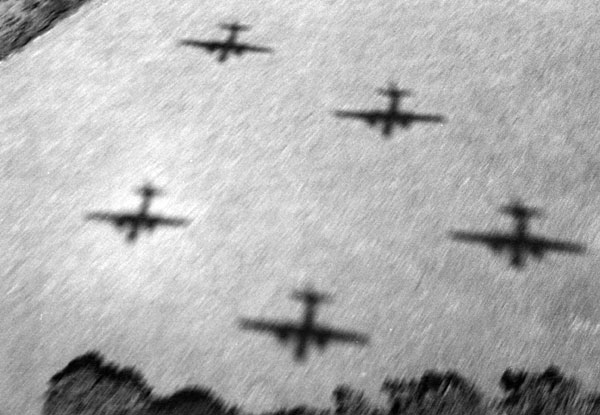 |
|
A Boston Bombing Defending Forces
|
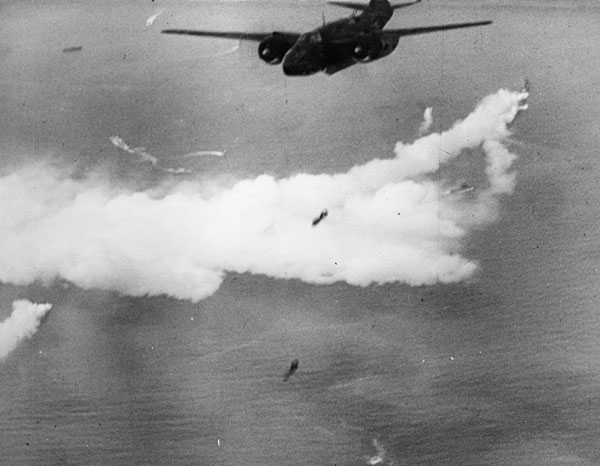 |
|
Overall View of the Attack on Dieppe
|
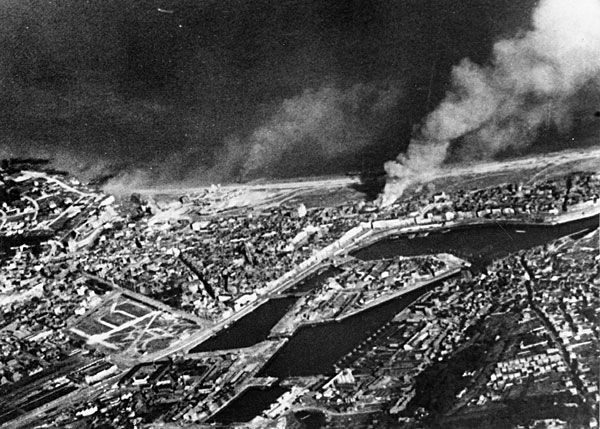 |
Minor Ops:
- 1 Mosquito sent to Bremen, does not return
[  | |   ] ]
Air Operations, Solomons 5th Air Force B-17s attack Japanese shipping at Faisi in the Shortland Islands.
[  | |   ] ]
Caribbean U-162, continuing to stalk Convoy TAW(S), again torpedoes the unarmed US freighter West Celina (5722t). The ship is abandoned by her 39-man crew. U-564 also attacks the convoy torpedoing and sinking two British ships, the tanker British Consul (6940t) and the freigher Empire Cloud (5969t).
[  | |   ] ]
Eastern Front While the Germans advance on a wide front in the Don basin, a Russian counterattack opens a gap between the Italian army and the German 6th Army. Gen Friedrich von Paulus, commander of the German 6th Army, orders his forces to take Stalingrad despite their great losses. Russian troops evacuate Krasnodar.
In the northern sector, from this day until the end of September, the Russians in the Leningrad and Volkhov sector launch a series of attacks to try to cut the corridor between Tosno, south of Leningrad, and Lake Ladoga, in order to relieve Leningrad, but are repulsed by the German 18th Army.
NORTHERN SECTOR
The Soviet Neva Group and the 13th Air Army of the Leningrad Front, together with the reformed 2nd Shock, 8th and 14th Air Armies of the Volkhov Front mount the Sinyavino Offensive Operation. Some 190,000 men are committed to the attack.
[  | |   ] ]
Guadalcanal In a limited offensive, the 5th Marine Regiment, part of the 11,000 US forces on the island, clears the coastal villages of Matanikau and Kokumbona. The perimeter around the zone occupied by the Americans, taking in Lunga Point and Henderson Field, is still very narrow. Companies L and B attack Matanikau from the east and south. As L Company advances, it meets rifle fire from enemy emplacements on the ridges to its front and left flanks. The company reaches the outskirts of Matanikau village by 1400. B Company is prevented from crossing from the east bank over the sand bar at the river mouth by enemy fire. B Company engages the Japanese in the village with rifle and machine-gun fire while L Company pushes through the village. Company I, moving forward by sea, clears Kokumbona.
The 3 companies kill about 65 Japanese to a loss of 4 killed and 11 wounded before returning to Lunga Point. While patrolling to locate an enemy radio station and being guided by a local, Company A of the 1st Marines, Capt Charles Brush, runs into and virtually wipes out a party of 34 Japanese army troops, who had recently landed, near Taivu Point. Documents captured from these Japanese included a code for ship-to-shore communication during landing operations. This leads to conclusion that the enemy might attack by land against the 1st Marine Div's east flank, or force a landing against the Lunga shore defenses in an effort to recapture the airfield, or to attempt both.
Meanwhile, 4 Japanese transports carrying about 1,500 men of the second echelons of the Ichiki Force and the Yokosuka 5th Special Naval Landing Force leave Rabaul, New Britain screened by 4 destroyers. The plan is to land on Guadalcanal on the 24th.
[  | |   ] ]
New Guinea The main pass across the Owen Stanley Mountains is now in the hands of the Japanese 18th Army. Troops form the Australian 7th Division begin amphibious reinforcement of Port Moresby.
[  | |   ] ]
North Africa Gen Alexander impresses on Gen Montgomery that he must hold the El Alamein positions at all costs while preparations are made for the counteroffensive.
[  | |   ] ]
France There is a major raid, Operation JUBILEE, by Canadian and British troops on Dieppe. The troops involved are the 2nd Canadian Div, under Maj-Gen John H. Roberts, and Nos 3 and 4 Commando with a handful of Americans and Free French- about 6,100 men total. The raid is designed to provide battle experience for the troops and to gain information about German defense methods which might be useful in the future. A secondary aim of the operation is to force the Luftwaffe in the West into a decisive battle and destroy its 500 bombers and fighters. It is only partially successful. 60 RAF fighter squadrons claim 91 destroyed and 44 probably destroyed, but the Germans admit only 48 destroyed and 24 damaged. At 3:00a.m. the ships carrying the landing party arrive about 8 miles off Dieppe without being spotted. At 3:30a.m. the LSIs (Landing Ships Infantry) used for transporting the infantry launch the landing craft. Almost at once things begin to go wrong. The flotilla of landing craft with the Royal Regiment of Canada ends up a long way from the prescribed route and so is unable to be at the right sector of the beach at the right time. Then at 3:47a.m. the gunboat leading the way for No 3 Commando runs into a group of armed German trawlers. A fierce exchange of fire takes place and the British craft gets the worst of it. The 20 landing craft carrying No 3 Commando have to scatter for safety.
When the Canadians manage to reach the areas allotted to them they are pinned down on the narrow beach by a murderous, accurate fire. 27 light tanks are landed from special Royal Navy craft, but are destroyed as soon as they come on shore, and the attackers are blown to pieces.
By 9:00a.m. it is determined that the attack has clearly failed and the troops are ordered to re-embark at once. Almost none of the installations marked for destruction is reached and only a small portion of the landing force can be evacuated. The casualty list is long: 3,600 men, 106 aircraft, a British destroyer, the Berkeley with the loss of 15 of her crew, 30 tanks, and 33 landing craft. The Germans lose about 600 men and about 50 planes. The lessons of the operation, however bitter, are very important both on the general points of how difficult it is to capture a defended port, or how important is a preliminary bombardment, to the more detailed lessons relating to equipment for beach landings. Hitler comments: 'This is the first time the British have had the courtesy to cross the sea to offer the enemy a complete sample of their new weapons.'
At 4:00p.m. in Dieppe there is no sign of the morning's encounter on the beach. Life is quite normal and all the shops are open.
On the way to Dieppe
|
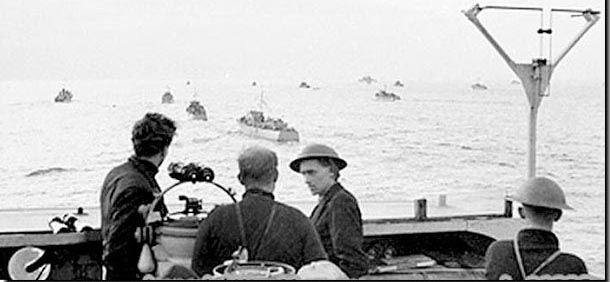 |
|
On the Beach of Dieppe, British Landing Vessels
|
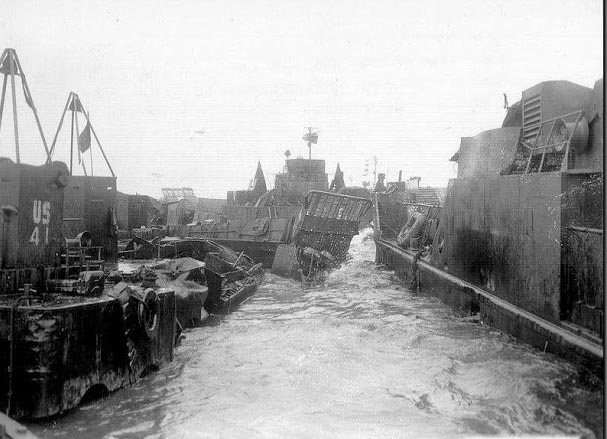 |
|
Canadian Wounded and Abandoned Churchill Tanks
|
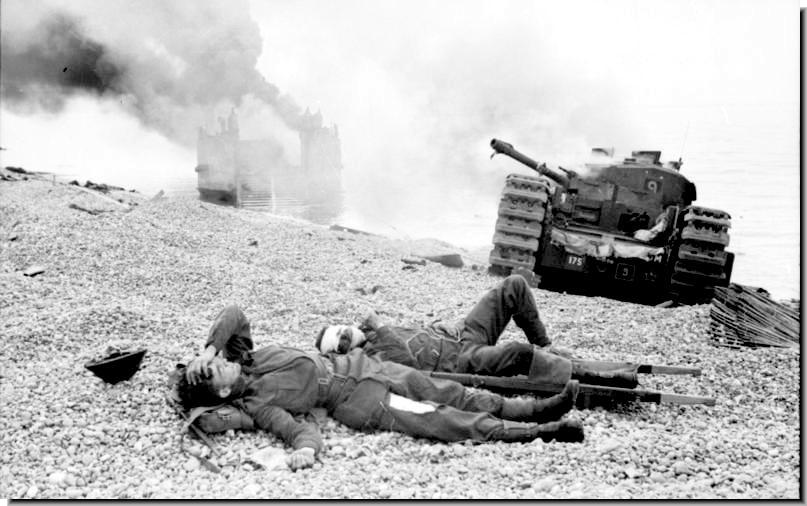 |
|
Canadian Dead on the Beach
|
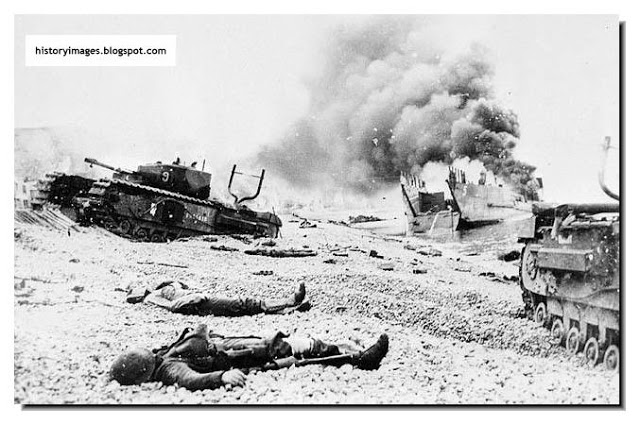 |
|
Exhausted Canadians Captured
|
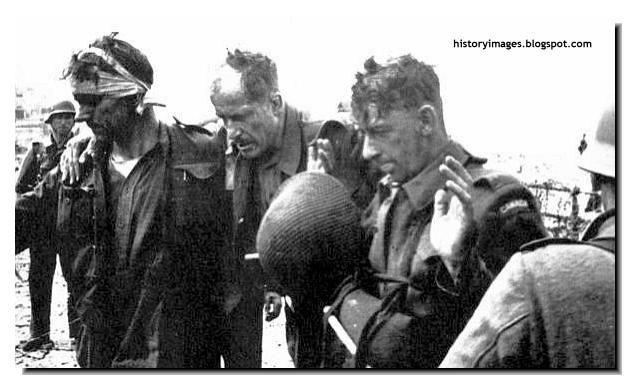 |
|
Captured Canadian Soldiers
|
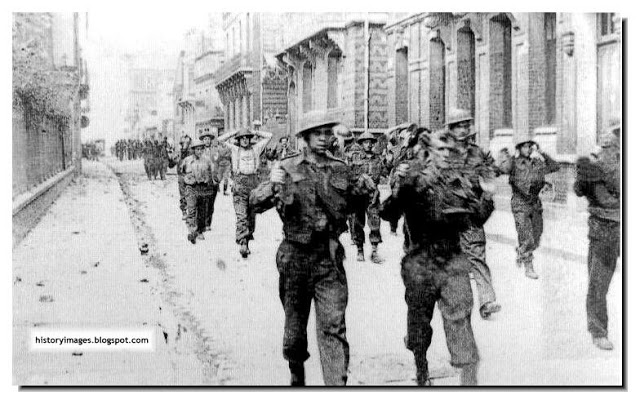 |
|
Captured Germans brought to Britain
|
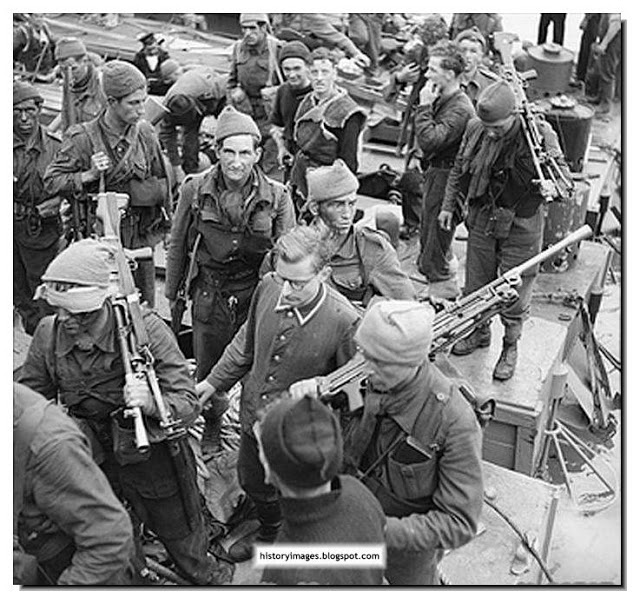 |
|
Canadians on the way back to Britain
|
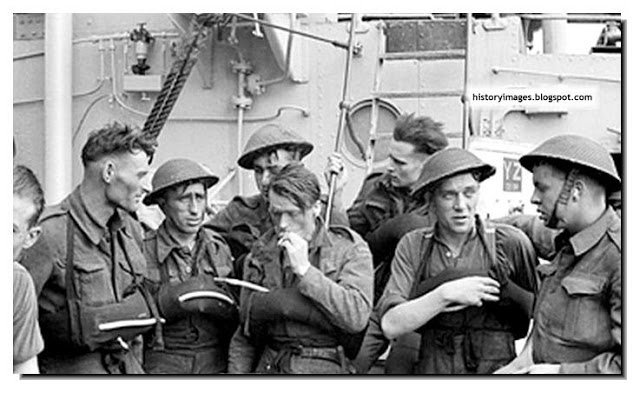 |
|
British Commandos and American Rangers
|
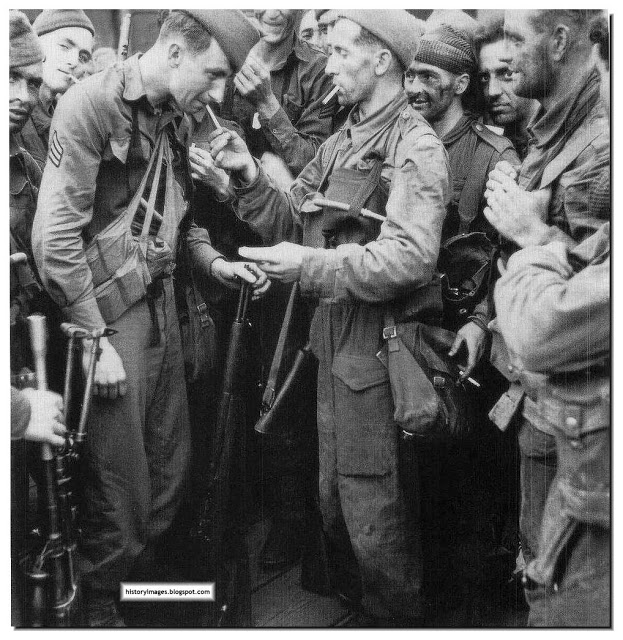 |
[  | |   ] ]
|











